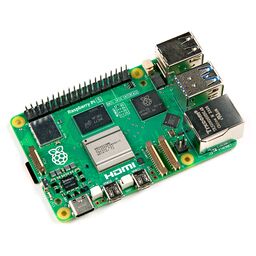NixOS on ARM/Raspberry Pi 5
The Raspberry Pi family of devices is a series of single-board computers made by the Raspberry Pi Foundation. They are all based on Broadcom System-on-a-chip (SoCs).
Status
Support for the Raspberry Pi 5 is currently downstream and experimental. It will not be fully supported until mature support exists in upstream Linux and U-Boot, but using UEFI already provides a workable solution. Graphics drivers are not yet available in NixOS.
Board-specific installation notes
First, install EDK2, following the instructions from the port README. With EDK2 installed as the Platform Firmware, you can follow the standard instructions for UEFI on ARM.
EDK2 enables booting a mainline kernel, but hardware support will be very limited. Notably, you'll need to perform the installation using Wi-Fi, as Ethernet is unsupported. Once the system is installed, you can switch to the vendor's modified kernel. This is not (yet?) available in Nixpkgs, so you'll need to get it from a flake. If you're not using flakes, you can simply add this to your configuration:
{
boot.kernelPackages = (import (builtins.fetchTarball https://gitlab.com/vriska/nix-rpi5/-/archive/main.tar.gz)).legacyPackages.aarch64-linux.linuxPackages_rpi5;
}
For the vendor kernel to boot properly, you must switch from ACPI to Device Tree in the UEFI settings (at Device Manager -> Raspberry Pi Configuration -> ACPI / Device Tree -> System Table Mode). When using the vendor kernel (which provides full power management support), you may additionally wish to remove force_turbo=1 from /boot/config.txt.
If you are using nixos-unstable, then you can also use the rpi4 kernel (this is supposed to be a generic aarch64 kernel for rpi 3,4,5). Although, due to a smaller page size, this will have slightly worse performance:
{
boot.kernelPackages = pkgs.linuxPackages_rpi4;
}
